DVDs Round-Up 6 | reviews, news & interviews
DVDs Round-Up 6
DVDs Round-Up 6
Olivier Assayas's Summer Hours, Maurice Pialat, Ernst Lubitsch, Cracks and much more
There's a piquant French perfume to our April round-up. DVD of the month is Olivier Assayas's magnificent family drama Summer Hours, reissued in the US with revealing extras (and available worldwide from Amazon). Maurice Pialat's work is considered at length and Séraphine and Rumba are among the new releases. We unearth an extraordinary Czech epic,The Valley of the Bees, and watch Ernst Lubitsch's delicious early Berlin comedies. Films covered previously, including New Moon, The White Ribbon, 2012 and Zombieland are noted in brief, with a link to the original review. Our critics are Anne Billson, Tom Birchenough, Alexandra Coghlan, Graham Fuller, Fisun Güner, Sheila Johnston, Veronica Lee, Jasper Rees and Adam Sweeting.
DVD of the Month
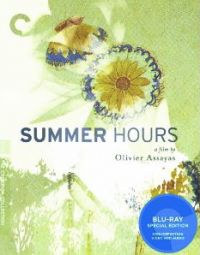 Summer Hours, dir Olivier Assayas (Criterion)
Summer Hours, dir Olivier Assayas (Criterion)- Find Criterion's US edition of Summer Hours on Amazon
- Read more of Graham Fuller's film reviews and features
Other Releases
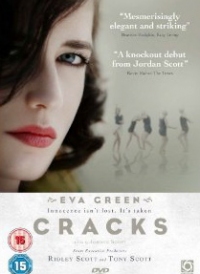 Cracks, dir. Jordan Scott (Optimum Home Entertainment)
Cracks, dir. Jordan Scott (Optimum Home Entertainment)
By Jasper Rees
Cracks is the debut feature of Jordan Scott. The first thing to say about it is that her old man Ridley, whose most female-friendly effort is Thelma and Louise, could not, and never would, have made it. Set in the girlie milieu of flower arranging and midnight feasts, it barely has a single speaking part for a male character. Its cast consists of a gaggle of girls sealed up in a remote English boarding school in the 1930s, and their diving instructor Miss G. Played with bug-eyed, gothic relish by Eva Green, Miss G has a sinful whiff of Miss Brodie about her. She gazes longingly at postcards of Rome and feeds off the worship of her charges. But where Muriel Spark's charismatic fascist sympathiser is politically misguided, Miss G is predatory, particularly when a bewitching new girl arrives from the Continent.
The novel from which it is in fact adapted tells of a similar establishment in 1960s South Africa, where the isolation of the white schoolgirls hinted at the self-imposed political isolation of white society. Scott has carefully transplanted it to 1930s England, at a time when noises off in the great world beyond its isolated confines are distantly caught. The new girl (Maria Valverde) to join the dorm is an exotic reminder to Miss G of her past as a pupil at the school. She instantly bestows her favour, enraging the previous incumbent (Juno Temple), who sets her entire gang upon the newcomer. There are evident inspirations - Picnic at Hanging Rock and Heavenly Creatures in particular, which both focus on the terrible things that can happen around teenage girls. But Cracks is finally a sort of Lady of the Flies, in which, given half a chance, feral females expose the beastliness lurking beneath a starched uniform. Scott extracts decent performances from her young cast, and makes much of the watery Irish landscape standing in for the North of England. The diving scenes have a sinuous allure, especially the moonlit skinnydipping interlude. The film is let down by Green's wildly exaggerated turn, and you can't quite believe in the narrative's grand-guignol finale. Scott's next film will be better.
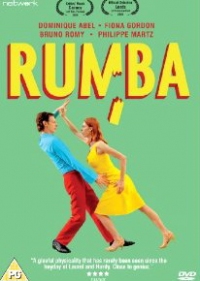 Rumba, dirs Dominique Abel, Fiona Gordon, Bruno Romy (Network)
Rumba, dirs Dominique Abel, Fiona Gordon, Bruno Romy (Network)
By Sheila Johnston
This Franco-Belgian curio tells the primary-coloured tale of two colourful primary school teachers whose great passion is Latin American ballroom dancing - until one day, en route home from a competition, they suffer a serious car crash that leaves him an amnesiac and her minus a leg. Their dancing days are over and so are their working lives. After that, things really start to get serious.
Out of this unpromising material - an attempted suicide, a mugging, a house burned down - the trio of director-stars (Abel and Gordon, a real-life couple, play the two main characters, while Romy appears as the mugger) have fashioned a suite of meticulously staged tragi-comic set-pieces, in which dialogue takes second place to virtuoso physical clowning. The pair scramble acrobatically into their dancing gear while driving their car at top speed; their shadows glide off in an elegant rumba while their injured owners slump impotently by; Gordon - a toothier, gawkier Tilda Swinton lookalike - executes a sort of grotesque, outrageously extended ballet-cum-balancing-act involving a crutch, an uncontrollable armful of papers and her wooden leg. Rumba's godfather apparent is the master of this brand of comedy, Jacques Tati, but, poised between nihilism and defiant, life-affirming sweetness in the teeth of extreme adversity, it is, if anything, even more melancholy.
The odd tone of the piece, the minimal dialogue, the basic staging - predominantly with static, single camera set-ups - and the slow-burning, very non-PC humour won't be to all tastes. And, despite a brisk 77-minute running time, Rumba loses its footing mid-way through after yet another mishap pulls the couple apart for a long stretch. One for adventurists.
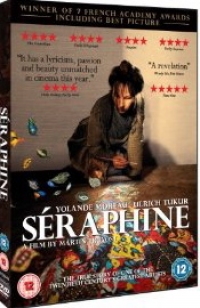 Séraphine, dir Martin Provost (Paradox)
Séraphine, dir Martin Provost (Paradox)
By Fisun Güner
By day she cleans the houses of her betters, by night she paints masterpieces. And because the simple and religiously devout Séraphine has hardly two sous to rub together, she makes her own paints, too. We see her trudging with ungainly gait as she gathers her materials: blood bottled at the local butchers; hot candle wax pilfered from her local church (which lend her decorative paintings of fruits and flowers a soft, sheeny lustre); and freely-sourced local soil, sludge and flora. Along with cheaply purchased white paint from her local all-purpose grocer’s, Séraphine (Yolande Moreau) mashes and mixes these together with an expert if untutored hand, producing vivid and fantastical paintings that have all retained the brilliance of their original colours. And if these paintings will not quite ensure Séraphine’s fame and fortune, they will, at least eventually, turn her into the marginally celebrated if still little known Séraphine de Senlis, a true naïf – though the art dealer who discovered her preferred the term “primitive modernist” - who is soon hailed as a kind of visionary genius.
Directed by Martin Provost and winner of seven Césars (the French Oscars), including best film, Séraphine is a beautifully shot, slow-paced and understated bio-pic of an artist who was discovered by the same German dealer, Wilhelm Uhde (Ulrich Tukur), who discovered the lowly customs clark Henri Rousseau. Uhde, for whom she scrubs floors, soon makes her believe that she can stand shoulder-to-shoulder with Van Gogh. But then the First World War intervenes and her saviour (or the unwitting master behind her mental decline) has secretly to flee the country, and is only able to return some 13 years later.
When the film opens, Séraphine is already middle-aged, a plodding figure who sings with rapturous though tuneless joy to the Virgin in church, and to her guardian angel as she paints. It ends with her confined in a mental asylum, unaware that, for a brief moment during her life, her light really did shine in fashionable Parisian galleries. The French are exceptionally good at tasteful and restrained artist bio-pics, and this is no exception. It's just a bit of a shame that it wasn't less willing to frame the story as a rather conventional and unchallenging one about artistic genius, madness and bourgeois distain.
In Brief
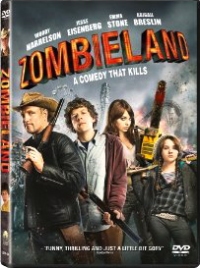 Zombieland, dir. Ruben Fleischer (Sony Pictures Home Entertainment)
Zombieland, dir. Ruben Fleischer (Sony Pictures Home Entertainment)
Zombieland opens both vomitously and wittily, gump and gags flowing in equal abundance. In post-apocalyptic, zombiefied America, terrorised by marauding undead, only a few evade their clutches, including geeky Columbus (Jesse Eisenberg) and Tallahassee (Woody Harrelson, on priceless form). They fall in with two wise-ass sisters, and head west towards a theme park rumoured to be zombie-free. There is a wonderful cameo along the way from an uncredited star. There’s not much heft to this haunted road movie. But it’s done with a knowing wink and winning gusto. (JR)
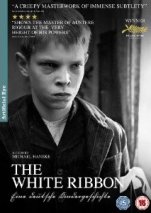 The White Ribbon, dir. Michael Haneke (Artificial Eye)
The White Ribbon, dir. Michael Haneke (Artificial Eye)
That severe Austro-German Angstmeister Michael Haneke turns his gaze on the origins of Nazism, which he divines in a North German village afflicted by unexplained acts of aggression just after the First World War. The finger points, inconclusively, at an eerie shoal of dead-eyed, Ayran-blond children, but who knows? This impeccably crafted, Palme D'Or-winning film proposes a bleak account of how violence begets violence, lightened momentarily by the shimmering monochrome photography and a (for Haneke) uncommonly simpatico central character. (SJ)
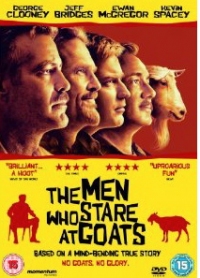 The Men Who Stare at Goats, dir. Grant Henslov (Momentum Pictures)
The Men Who Stare at Goats, dir. Grant Henslov (Momentum Pictures)
A would-be black comedy based on Jon Ronson's well-received book-length reportage about the extraordinary activities of self-styled "warrior monks" within the US army during the Iraq war whose mission was to find kinder, gentler ways of killing people. No nutty scheme was too far-fetched: "race-specific stink bombs", subliminal propaganda, walking through walls, levitating, killing goats with a gimlet glare.... But the stellar cast (George Clooney, Jeff Bridges, Kevin Spacey, Ewan McGregor) can't hypnotise you into failing to see the film's fatal flaw - a rambling, mirthless script. (SJ)
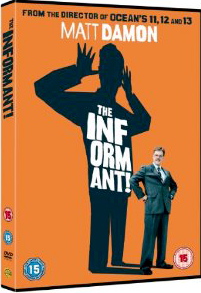 The Informant!, dir. Steven Soderbergh (Warner Home Video)
The Informant!, dir. Steven Soderbergh (Warner Home Video)
Matt Damon in a toupee! Stand-up comics in supporting roles! An eager-beaver, 100 per-cent unreliable voiceover narration! Perky, parping horn music! Based on a book by Kurt Eichenwald, this excitable comedy tells the real-life tale of Mark Whitacre, a senior executive at one of America's largest agri-businesses who blew the whistle on a multinational price-fixing scam in the early Nineties. Instead of a brooding conspiracy thriller, Soderbergh produces a sardonic satire with more layers than an onion and a deliciously funny central performance. (SJ)
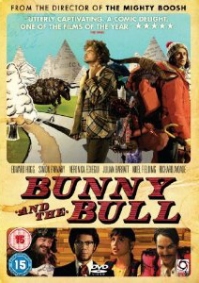 Bunny and the Bull, dir. Paul King (Optimum Home Entertainment)
Bunny and the Bull, dir. Paul King (Optimum Home Entertainment)
Paul King’s first feature is a road movie set inside its main character’s head as agoraphobe Stephen (Edward Hogg) reminisces about the scrape-filled trip he took with Bunny (Simon Farnaby). King uses flashbacks, semi-animated backdrops, back projections and beautifully detailed miniature sets to give the film a weird, dreamlike quality. Although it’s light on comedy, there is much to admire, including the dénouement, where Bunny fights the bull. It’s strangely affecting and King evokes Stephen’s mental fragility with a gentle touch. (VL)
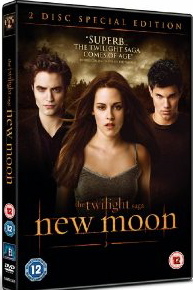 The Twilight Saga: New Moon, dir. Chris Weitz (E1 Entertainment)
The Twilight Saga: New Moon, dir. Chris Weitz (E1 Entertainment)
Weitz takes over directing duties on the second of the Twilight films adapted from Stephenie Meyer's young adult romances. Bella (Kristen Stewart) gets dumped by her sparkly vampire boyfriend Edward (Robert Pattinson), and consoles herself in the company of Jacob (Taylor Lautner), a chunky Native American shapeshifter. Yes, it's the eternal human-vampire-werewolf romantic triangle! Lots of inarticulate adolescent brooding ensues, as well as a spot of cliff-diving and a race against the clock to confront an ancient sect of Tuscan bloodsuckers led by Michael Sheen, looking disconcertingly like a vampire Mr Bean. (AB)
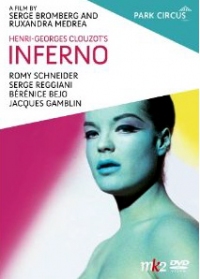 Henri-Georges Clouzot's Inferno, dir. Serge Bromberg (Park Circus)
Henri-Georges Clouzot's Inferno, dir. Serge Bromberg (Park Circus)
Henri-Georges Clouzot was one of France’s leading directors, allowing him a huge budget to embark on L’Enfer, about a man who, living in rural France, is irrationally jealous of his young wife (Romy Schneider). Despite the single lakeside location and a small cast, the film foundered on the director’s search for a new cinematic language with which to convey the husband’s psychosis. The film was never made. This intriguing but ultimately elusive documentary revisits the story of Clouzot’s monunmental ego and creative failure. (JR)
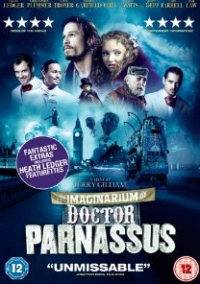 The Imaginarium of Doctor Parnassus, dir. Terry Gilliam (Lions Gate Home Entertainment)
The Imaginarium of Doctor Parnassus, dir. Terry Gilliam (Lions Gate Home Entertainment)
The death of Heath Ledger threw a spanner in the works of Imaginarium, a tumble-dryer of visual imagery and outlandish characterisation whose chaotic narrative is further cluttered by replacing Ledger with the triumvirate of Jude Law, Johnny Depp and Colin Farrell. But Gilliam scored big with his pivotal duo of Christopher Plummer as a touchingly soulful Dr Parnassus, and a cigar-sucking Tom Waits as Mr Nick, a kind of satanic Colonel Tom Parker. It’s not a classic, but it exhibits flashes of trademark Gilliam brilliance. (AS)
 2012, dir. Roland Emmerich (Sony Pictures Home Entertainment)
2012, dir. Roland Emmerich (Sony Pictures Home Entertainment)
You won’t want to see 2012 for the subtle textures of its characterisations, though a likeable cast (John Cusack, Oliver Platt, Amanda Peet) makes the script sound intermittently plausible, but the CGI sequences are flabbergasting. Los Angeles disintegrates as the Earth’s crust breaks apart, a volcanic eruption sends fireballs of debris streaking down like incoming missiles, and history's greatest tidal wave washes an aircraft carrier onto the White House. It’s a brilliantly realised entertainment that fully exploits the frontier technology of computer games and digital graphics. (AS)
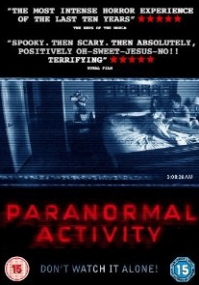 Paranormal Activity, dir. Oren Peli (Icon Home Entertainment)
Paranormal Activity, dir. Oren Peli (Icon Home Entertainment)
Writer/director Peli’s low-rent spook-opera crashed through the $100m earnings barrier within weeks of its release, but that’s the most sensational thing about it. Derivative (mostly of The Blair Witch Project), predictable and soporifically uneventful for the first 45 minutes, the flick mysteriously generated collective hysteria in audiences, but in the cold light of day it’s just plain daft. Horror movies frequently depend on the gullibility of their protagonists, but Peli’s leads Katie (Katie Featherston) and Micah (Micah Sloat) set new standards in zombified gormlessness. You’ll find yourself rooting for the bad-tempered demon. (AS)
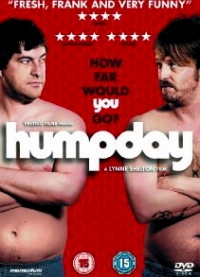 Humpday, dir. Lynn Shelton (Momentum Pictures)
Humpday, dir. Lynn Shelton (Momentum Pictures)
Ben is deep in wedded bliss and trying for a baby ("We've officially removed the goalie and we're doing free kicks") - until, that is, the 1.30am arrival of his college room-mate, back from doing something very avant-garde and rather dodgy in Mexico. Within hours they've agreed to make a gay porn film together, all in the cause of art, of course. Shelton's freewheeling comedy is a minor classic of the mumblecore movement, wherein a shaggy-dog plot and improvised dialogue quietly build up to affectionate yet wicked character revelations. (SJ)
Re-releases of the month
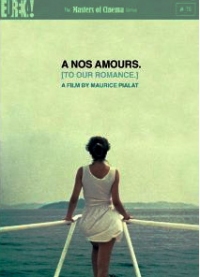 A nos amours and Sous le soleil de Satan, dir Maurice Pialat (Eureka Entertainment)
A nos amours and Sous le soleil de Satan, dir Maurice Pialat (Eureka Entertainment)
By Alexandra Coghlan
When Sous le soleil de Satan was awarded the Palme D’Or at Cannes in 1987 director Maurice Pialat collected it to the sound of massed boos and howls from the audience. After raising his fist at his detractors he calmly retook his seat. It’s an episode that typifies the career of this studiously unconventional French auteur. Creative mavericks are so often the darlings of the film world – romantic genre-breaking revolutionaries, cosily quirky eccentrics – but Pialat is that rare thing, a genuine contrarian, who remained as wilfully unyielding as his films. Writing in a profile of the director, critic Kent Jones observed, "To say that Pialat marched to the beat of a different drummer is to put it mildly. In fact he didn’t really march at all. He ambled, and fuck anybody who got it into their head that they’d like to amble along with him. Or behind him. Or ahead of him."
All of which explains why his award-heavy output has failed to earn Pialat the international reputation of contemporaries Truffaut or Godard. Despite strenuously rejecting any assimilation with the French Nouvelle Vague, there is much in Pialat’s mature style that recalls it. His fondness for improvisation, his lengthy tracking shots and above all his deliberately disjointed editing style place him at the very least in dialogue with these filmmakers, if not actually among their ranks. His is the cinema of rupture, its energy living in the cracks and breaks in conventional narrative. It’s as maddening as it is impressive – think Michael Haneke without the elegant control – and like Haneke demands a degree of surrender from the viewer.
Newly released on DVD as part of the Masters of Cinema series are two of Pialat’s greatest works from the 1980s – the coming-of-age drama A nos amours (Here’s To Love) and the infamous Sous le soleil de Satan (Under Satan’s Sun), a psychological meditation on faith and religion. While wildly different both in tone and subject matter, the two films make for an interesting pair, charting the developing professional relationship between the director and his young muse Sandrine Bonnaire, and also following Pialat’s own development as an actor through two pivotal roles.
A nos amours is what a cautionary tale might look like with all caution removed. Pialat’s lens, caressing with voyeur-like intimacy, follows 15-year-old Suzanne (Bonnaire) from the pastel-coloured love-making of a summer camp play to the grubby and infinitely more real sexual encounters that punctuate her teenage years in Paris. Developing Pialat’s fascination with the sexualised ingénue – most disturbingly explored by Isabelle Huppert’s Loulou in his 1980 film of the same name – the film, like the camera’s gaze, at no point shrinks from exploring the baser implications of its subject matter. With Pialat himself taking the role of Suzanne’s adored but absent father, the relationships of director and muse, and father and daughter, become overtly correlated, making for a self-regarding but impressively unselfconscious film. Much is made of the flux between the dimpled innocent and the promiscuous young seductress, and Bonnaire – making her film debut – balances these in an astonishingly natural performance, bypassing the go-to clichés of teenage angst with the awkward grace that has become her trademark.
Pialat’s portrayal of teenage sexuality and self-discovery has aged well, but it is the family relationships that shape Suzanne’s actions that feel most shockingly contemporary. The violence that spills over without warning into the domestic lives of the central characters is as complex as it is extreme. Suggestions of homosexuality as well as incestuous desire lurk around Suzanne’s brother Robert (Dominique Besnehard), and his aggressive neediness towards both her and their volatile mother is perhaps the film’s most confronting variation on male/female interaction.
The famous dinner-party scene sees the climax of many of the film’s emotional strands, and its improvised elements (Pialat failed to warn his cast that his character of the estranged father would be returning) give it a tension and an honesty that are deeply uncomfortable. While such emotional honesty is one of Pialat’s strengths, A nos amours also showcases his primary weakness – a disdain for narrative context. While the individual scenes of the film are powerful and unsettling, the sudden and alienating cuts between them and unexplained shifts of context and time dilute their impact. Dramatic naturalism meets stylistic affectation head-on and the result is a frustratingly good failure. 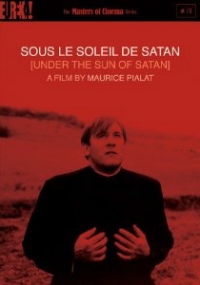 While Pialat’s fascinated focus in A nos amours was with the delicate cusp of insanity and love, in Sous le soleil his interest falls upon the all-too porous membrane between insanity and faith, superstition and sainthood. Taking on one of the most challenging roles of his career, Pialat regular Gérard Depardieu plays Donissan, a self-mortifying young curate whose faith is put to the test by an encounter with a flesh-and-blood Satan on a country hillside. Reprising his role of flawed authority figure, Pialat returns to the screen as Dean Menou-Segrais, the worldly cleric at once awed and appalled by the extremity of his protégé’s faith. The conceptual weight of the film rests almost entirely on the scenes between Depardieu and Pialat; it is here that Donissan’s character and faith are fully exposed, and here that we are encouraged to judge the conviction and sincerity of this troubled man. While perhaps untenable over a longer work, Depardieu’s controlled, almost impassive emoting is bizarrely effective, with more than a trace of Robert Bresson (whose earlier Mouchette is to some extent the film’s prequel) about it.
While Pialat’s fascinated focus in A nos amours was with the delicate cusp of insanity and love, in Sous le soleil his interest falls upon the all-too porous membrane between insanity and faith, superstition and sainthood. Taking on one of the most challenging roles of his career, Pialat regular Gérard Depardieu plays Donissan, a self-mortifying young curate whose faith is put to the test by an encounter with a flesh-and-blood Satan on a country hillside. Reprising his role of flawed authority figure, Pialat returns to the screen as Dean Menou-Segrais, the worldly cleric at once awed and appalled by the extremity of his protégé’s faith. The conceptual weight of the film rests almost entirely on the scenes between Depardieu and Pialat; it is here that Donissan’s character and faith are fully exposed, and here that we are encouraged to judge the conviction and sincerity of this troubled man. While perhaps untenable over a longer work, Depardieu’s controlled, almost impassive emoting is bizarrely effective, with more than a trace of Robert Bresson (whose earlier Mouchette is to some extent the film’s prequel) about it.
Occupying the rather more human subplot is Sandrine Bonnaire as a volatile young nymph with only a fragile grasp on reality. The casual assessment and rationality with which she handles first a shotgun and then a razor blade are as disturbing as any of Donissan’s frenzies of self-mortification, and while her climactic encounter with the priest suffers once again from a lack of narrative context, she sustains a genuinely unnerving presence through the film.
In adapting a novel by the devout Catholic Georges Bernanos, the confessed atheist Pialat was undoubtedly making a gesture, yet it is far from the subversion one might expect. Fostering and heightening the mysterious element of Catholicism through his brutal editing and lack of transitional or expositional material, Pialat creates a film that, while painfully oblique at times, seems designed to recreate the experience of faith for its viewer. Denied the certainty of narrative or explication, we are thrown into a state of vulnerability, seeking answers and signs as urgently as Donissan himself.
Also re-released
 The Valley of the Bees, dir. František Vláčil (Second Run)
The Valley of the Bees, dir. František Vláčil (Second Run)
By Tom Birchenough
It’s one of the delights of following the Second Run DVD label that you chance on the work of a director you’ve never heard of, and realise you’ve come across a masterpiece. For me that was the case with Czech director František Vláčil’s 1967 film The Valley of the Bees. Vláčil is hardly well-known even in cinema circles, and though he was the contemporary of the remarkable group of 1960s directors who made up the Czech New Wave, he can hardly be counted one of their number; he certainly doesn’t lack acclaim in his native land, though, and at the end of the last century Czech critics voted Vláčil’s Marketa Lazarová (also available from Second Run) the best Czech film ever. Vláčil made The Valley of the Bees in the same year as, and on the back of Lazarová – few directors anywhere can have managed two such works of genius in so short a time - and partly on the same sets.
Set in the 13th century, Valley tells a story that virtually defies summary. As a child the nobleman Ondřej is pledged by his father to join an Order of Teutonic Knights, in which he grows up; as an adult he escapes, denying that faith to return to his childhood castle home, and marriage to his late father’s wife. His closest brother in the Order pursues him, and the resolution is bloody. Though there’s conflict, it doesn’t seem the focus of what comes across as a very still film, nurtured by extraordinary cinematography (wide screen, black and white) from František Uldrich. It captures down-to-earth details like the texture of stone as brilliantly as it does panoramic landscapes, among them remarkable scenes set on the sea close to the Order’s Baltic castle. The visual austerity matches that of the story itself, and its reflections on eternal themes such as faith and betrayal, suffering and God. You can see something of a debt to Sergei Eisenstein, of whom the Czech director was in awe, as well as common ground with his Soviet contemporary Andrei Tarkovsky – but Vláčil’s talent is finally very much his own. Tying The Valley of the Bees into the Prague Spring and Soviet invasion of Czechoslovakia, for its inherent theme of the rejection of dogmatism, may work chronologically, but seems finally rather tangential. The transfer and restored picture and sound are immaculate.
Box set of the Month
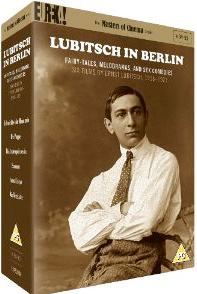 Lubitsch in Berlin (Eureka Entertainment)
Lubitsch in Berlin (Eureka Entertainment)
By Sheila Johnston
Universally revered by masters from Orson Welles and Jean Renoir to Alfred Hitchcock and John Ford, Ernst Lubitsch is the directors' director. Billy Wilder famously kept an inspirational sign on his office wall: HOW WOULD LUBITSCH DO IT? Today, he is best known for his 30-odd elegant, exquisitely entertaining Hollywood comedies, including Trouble in Paradise, Ninotchka, The Shop Around the Corner, To Be or Not To Be and Heaven Can Wait.
But there is another side to Lubitsch. Before he moved to America late in 1922, the director made over 40 films in his native Berlin. He died young - at the age of 55, of a heart attack - and so this early, incredibly prolific period of his career is simply too important, and much too good, to miss. What's more, these are no apprentice works or juvenilia; on the contrary, they reveal the speed and incredible facility with which Lubitsch mastered his chosen medium. Over the last few years, they have been rediscovered and celebrated at international festivals (I caught a number of them at a complete retrospective in San Sebastian in 2006). Now a small sample is making a very welcome appearance in this highly desirable six-disc collection.
While other leading German directors were steeped in the Sturm und Drang of Expressionism, crafting anguished, tenebrous films like The Cabinet of Doctor Caligari , Nosferatu or Waxworks, Lubitsch was making sumptuous costume pageants and a merry stream of wickedly inventive comedies. The six films in this set include examples of both, with historical drama represented by the Arabian Nights saga Sumurun and Anna Boleyn, while the comedies include the bitingly satirical Oyster Princess/Die Austernprinzessin and The Mountain Cat/Die Bergkatze.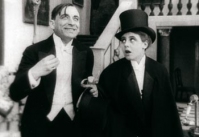 Throughout his career, Lubitsch's films celebrated high-spirited, independent women and in his German period he was blessed with a first-class silent comedienne in the shape of Ossi Oswalda, a raunchier, more exuberant version of Mary Pickford, who blazes through several of these films. In I Wouldn't Like to be a Man/Ich möchte kein Mann sein (picture left, a film which has since become a gay cult classic), she's a rebellious teenager who disguises herself in a frock coat and top hat, goes out on the town as a cheeky - and very convincing - young man and seduces her own strict (male) guardian.
Throughout his career, Lubitsch's films celebrated high-spirited, independent women and in his German period he was blessed with a first-class silent comedienne in the shape of Ossi Oswalda, a raunchier, more exuberant version of Mary Pickford, who blazes through several of these films. In I Wouldn't Like to be a Man/Ich möchte kein Mann sein (picture left, a film which has since become a gay cult classic), she's a rebellious teenager who disguises herself in a frock coat and top hat, goes out on the town as a cheeky - and very convincing - young man and seduces her own strict (male) guardian.
The subversive pastorale The Doll/Die Puppe is a raunchy spin on the familiar tale by ETA Hoffman, Oswalda plays a puppet-maker's daughter (he aims his wares at "bachelors, widowers and misogynists") who poses as one of her father's clockwork dolls and gets spliced in a marriage of convenience to a wimpy local aristocrat. Cue copious double entendres about pushing her buttons and winding her up. Apart from sex dolls, Lubitsch's German films are peppered with references to bisexuality, cross-dressing, foot fetishism... well, the director was, after all, based in one of the worldliest cities on the planet. 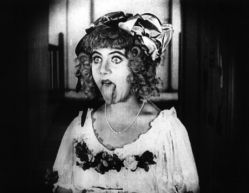 The Doll (picture right), which opens with a charming vignette of Lubitsch arranging a scale model of the film's stylised set, also plays wittily with the artifice of cinema and explores its possibilities in a fantastic series of sight gags (unfortunately, the version on this DVD has been issued with an intrusive accordion score).
The Doll (picture right), which opens with a charming vignette of Lubitsch arranging a scale model of the film's stylised set, also plays wittily with the artifice of cinema and explores its possibilities in a fantastic series of sight gags (unfortunately, the version on this DVD has been issued with an intrusive accordion score).
Lubitsch started out as an actor at Max Reinhardt's fabled Deutsches Theater, and starred in many of his own first comedies. This box set is slightly unrepresentative in not including any of these (though it does show Lubitsch on screen, playing a hunchback in Sumurun). Robert Fischer's superbly researched and detailed feature-length documentary on Lubitsch's early years - included in this box set - helps plug the gap with snippets from films such as Shoe Salon Pinkus/Schuhpalast Pinkus or The Blouse King/Der Blusenkönig, which anchor Lubitsch's vision to his East European-Jewish family's background in the garment business.
Mugging and clowning frantically, his own limitations as an actor are clear ("You couldn't call him subtle," remarks one commentator in Fischer's film), but the documentary offers trenchant insights into the nature of his comedy, the differences between him and Chaplin and the line that leads from the Berlin slapstick to his American work.
Lubitsch's talent was swiftly spotted and poached by Hollywood; he left his homeland of his own volition and returned there several times before Hitler's ascent. In 1935, though, he was stripped of his German nationality, in common with other artists from a Jewish background who had moved to America, and became a US citizen the following year. Lubitsch in Berlin offers the chance to discover one of cinema's greatest directors before he left his European roots behind and reinvented himself as the author of the sophisticated Lubitsch touch.
Explore topics
Share this article
more Film
 Stephen review - a breathtakingly good first feature by a multi-media artist
Melanie Manchot's debut is strikingly intelligent and compelling
Stephen review - a breathtakingly good first feature by a multi-media artist
Melanie Manchot's debut is strikingly intelligent and compelling
 DVD/Blu-Ray: Priscilla
The disc extras smartly contextualise Sofia Coppola's eighth feature
DVD/Blu-Ray: Priscilla
The disc extras smartly contextualise Sofia Coppola's eighth feature
 Fantastic Machine review - photography's story from one camera to 45 billion
Love it or hate it, the photographic image has ensnared us all
Fantastic Machine review - photography's story from one camera to 45 billion
Love it or hate it, the photographic image has ensnared us all
 All You Need Is Death review - a future folk horror classic
Irish folkies seek a cursed ancient song in Paul Duane's impressive fiction debut
All You Need Is Death review - a future folk horror classic
Irish folkies seek a cursed ancient song in Paul Duane's impressive fiction debut
 If Only I Could Hibernate review - kids in grinding poverty in Ulaanbaatar
Mongolian director Zoljargal Purevdash's compelling debut
If Only I Could Hibernate review - kids in grinding poverty in Ulaanbaatar
Mongolian director Zoljargal Purevdash's compelling debut
 The Book of Clarence review - larky jaunt through biblical epic territory
LaKeith Stanfield is impressively watchable as the Messiah's near-neighbour
The Book of Clarence review - larky jaunt through biblical epic territory
LaKeith Stanfield is impressively watchable as the Messiah's near-neighbour
 Back to Black review - rock biopic with a loving but soft touch
Marisa Abela evokes the genius of Amy Winehouse, with a few warts minimised
Back to Black review - rock biopic with a loving but soft touch
Marisa Abela evokes the genius of Amy Winehouse, with a few warts minimised
 Civil War review - God help America
A horrifying State of the Union address from Alex Garland
Civil War review - God help America
A horrifying State of the Union address from Alex Garland
 The Teachers' Lounge - teacher-pupil relationships under the microscope
Thoughtful, painful meditation on status, crime, and power
The Teachers' Lounge - teacher-pupil relationships under the microscope
Thoughtful, painful meditation on status, crime, and power
 Blu-ray: Happy End (Šťastný konec)
Technically brilliant black comedy hasn't aged well
Blu-ray: Happy End (Šťastný konec)
Technically brilliant black comedy hasn't aged well
 Evil Does Not Exist review - Ryusuke Hamaguchi's nuanced follow-up to 'Drive My Car'
A parable about the perils of eco-tourism with a violent twist
Evil Does Not Exist review - Ryusuke Hamaguchi's nuanced follow-up to 'Drive My Car'
A parable about the perils of eco-tourism with a violent twist
 Io Capitano review - gripping odyssey from Senegal to Italy
Matteo Garrone's Oscar-nominated drama of two teenage boys pursuing their dream
Io Capitano review - gripping odyssey from Senegal to Italy
Matteo Garrone's Oscar-nominated drama of two teenage boys pursuing their dream

Add comment